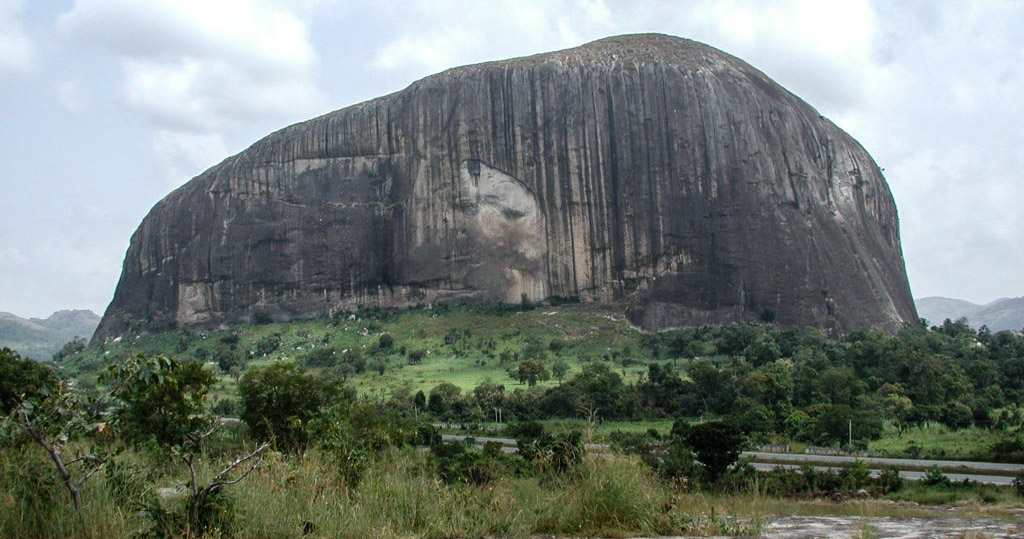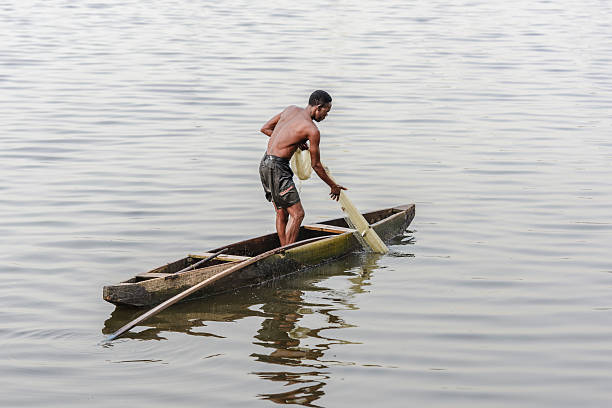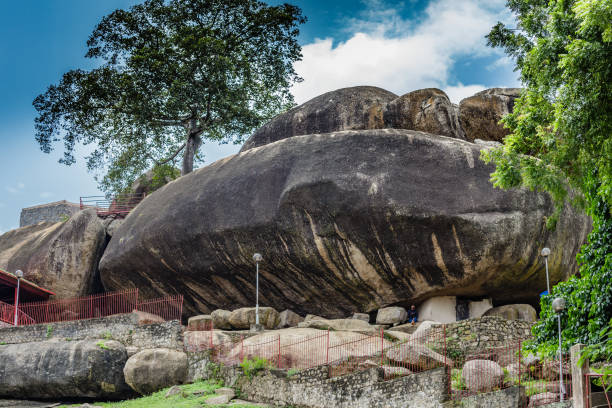Nigeria, located on the western coast of Africa, boasts a diverse geography with climates ranging from arid to humid equatorial. Its most remarkable feature, however, is its people. The country is home to hundreds of languages, including Yoruba, Igbo, Fula, Hausa, Edo, Ibibio, Tiv and more.
Nigeria is rich in natural resources, with significant deposits of petroleum and natural gas. The national capital is Abuja, located in the Federal Capital Territory, established by decree in 1976. Lagos, the former capital, continues to be the nation’s leading commercial and industrial hub.
Modern Nigeria was formed in 1914 when the British Protectorates of Northern and Southern Nigeria were merged. The country gained independence on October 1, 1960, and adopted a republican constitution in 1963 while choosing to remain a member of the Commonwealth.

Zuma Rock is a striking natural monolith located in Nigeria’s capital city, Abuja. Often referred to as the “Gateway to Abuja,” this awe-inspiring landmark stands at approximately 725 meters (2,379 feet) above sea level and is easily visible from many parts of the city.
A traditional hut in Nigeria. Simple yet functional dwelling that reflects the cultural and environmental influences of the region.


Fishing on Lagos Lagoon, Nigeria. The lagoon is a habitat for different aquatic organisms, such as various species of fish that are sources of income and food.
The lagoon is more than 50 km long and 3–13 km wide, separated from the Atlantic Ocean by a long sand spit 2–5 km long. Its surface area is approximately 6,354.7 km².

Olumo Rock is a mountain in south-western Nigeria. It is located in the city of Abeokuta, Ogun State, and was normally used as a natural fortress during inter-tribal warfare in the 19th century. Its patron spirit is venerated in the Yoruba religion as an orisha. The name olumo is the combination of two words: “olu” which means god/deity, and “mo” which means moulded.

Erin-Ijesha Waterfalls (also known as Olumirin waterfalls) is located in Erin-Ijesha, Osun State. The waterfalls were discovered in 1140 AD by one of the daughters of Oduduwa.
The fall features seven levels, on top of which the village Abake is located. Abake village shared boundary with Ẹfọ̀n-Alààyè in Ekiti State.

Nigeria is a melting pot of virtually all the native races of Africa, showcasing a remarkable diversity of people and cultures. The Bantu and Semi-Bantu peoples, migrating from southern and central Africa, intermingled with the indigenous Sudanese in Nigeria. Additionally, northern Nigeria saw the arrival of other groups, such as the Shuwa-Arabs, Tuaregs, and Fulanis, who migrated across the Sahara Desert in successive waves. This confluence of different ethnicities has enriched Nigeria’s cultural tapestry, making it one of the most diverse nations on the continent.
Learn More About Nigeria
Dive into Nigeria’s vibrant culture with our curated collection of photos, videos and courses.


